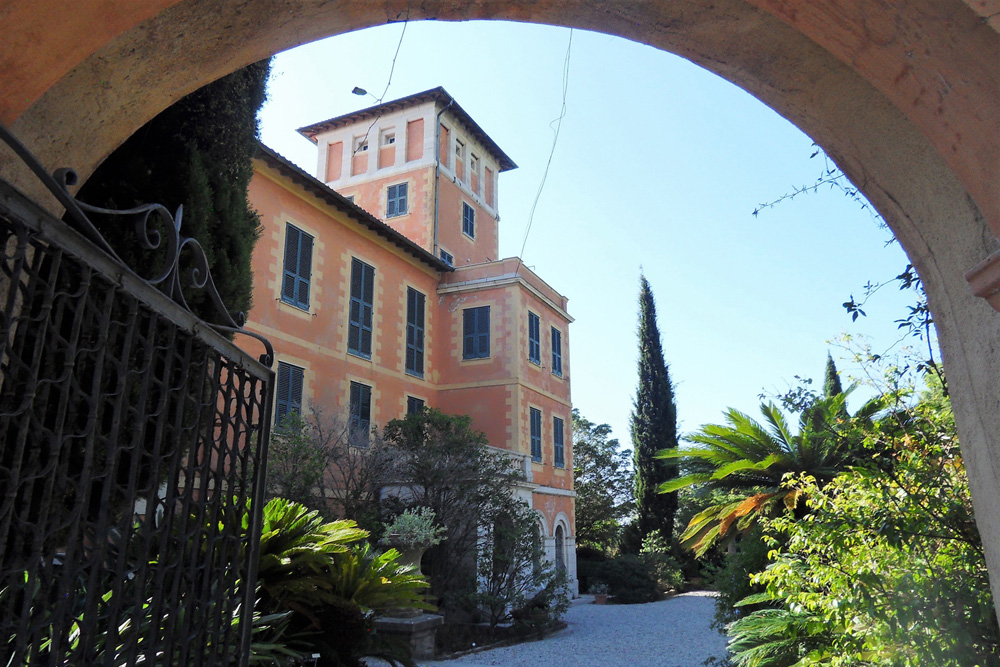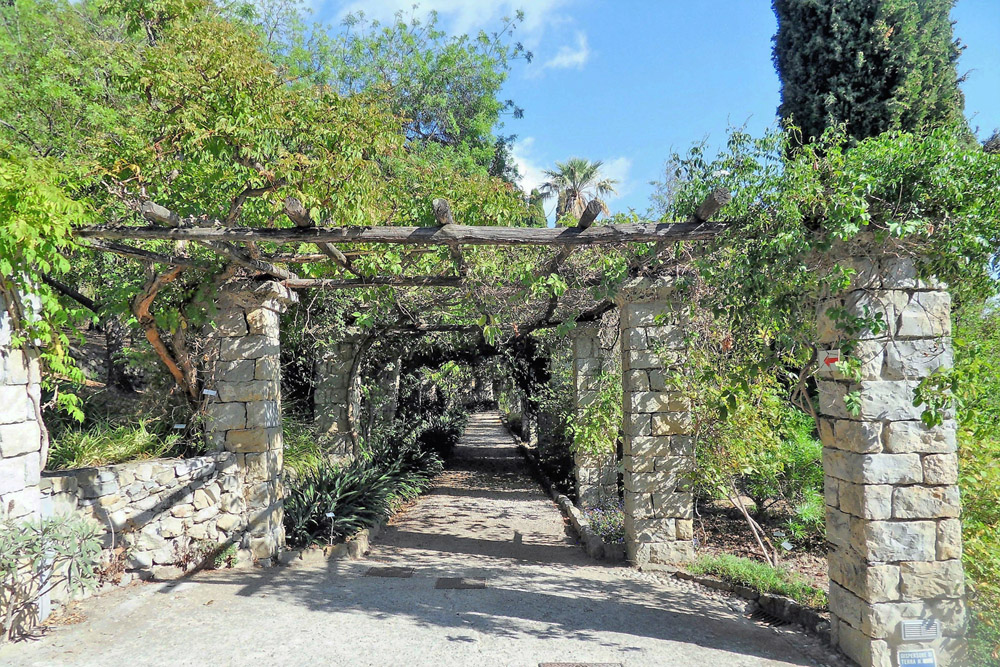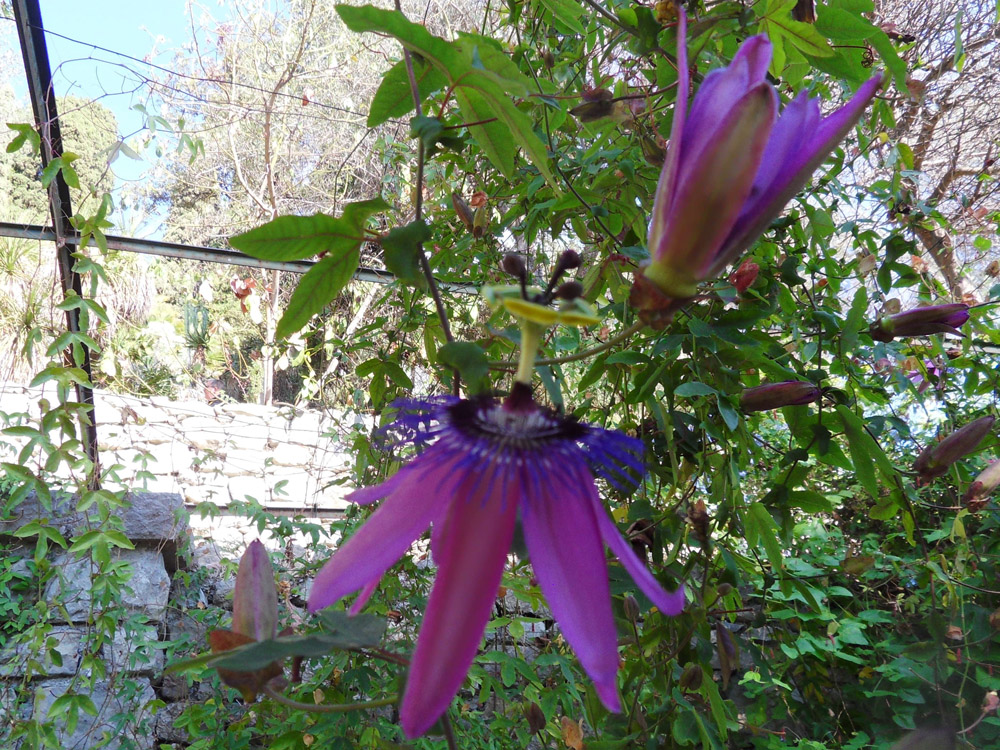Click on the images to enlarge them / Cliquez sur les images pour les agrandir
Like many other nineteenth century English gardeners who wanted to collect and grow exotic plants from warmer climes, Sir Thomas Hanbury was drawn to the coast near the French and Italian border. Protected from cold winds by the mountains behind and enjoying high humidity from the sea, the winter temperatures rarely drop below zero, making it possible to grow plants from other Mediterranean climate zones around the world, including Central and South America, South Africa and southern Australia.
In 1867 Hanbury purchased the crumbling ruins of the Palazzo Orengo (built in the 11th century on the site of an ancient Roman villa) on Capo Mortola between Menton and Ventimiglia with the fortune he had made in China from trading in silk, cotton and tea.
With the help of his brother Daniel who was a pharmacist and botanist and the German botanist Ludwig Winte, Hanbury soon made a magnificent botanic garden with many classical features, which attracted the attention of visitors from around the world, including Queen Victoria and other heads of state and Kuo Sung Tao, the first Qing dynasty minister to be accredited in Europe.
Sir Thomas died in 1907 but his daughter-in-law Dorothy also a passionate gardener, maintained the collection, which listed 5800 species in the catalogue of 1912.
Dorothy made some structural changes to the garden between 1925 and 1939 which then sadly suffered serious damage during the Second World War. Dorothy sold the garden to the Italian state in 1960 but due to lack of funds for the required restoration, it was entrusted to the University of Genoa in 1987.
The garden today covers 18 hectares, only half of which is under cultivation, with around 2500 taxa, the remaining half is natural forest of Pinus halpensis. As it covers a steep hillside the garden has been extensively terraced and access is via many flights of steps or paths following the contours and affording occasional stunning views of the sea. There are significant collections of palms, aloes and agaves, araucarias, eucalypts, melaleucas and salvias.
As with the gardens around Montpellier, this garden was exhibiting signs of extreme stress due to the hot summer and absence of rain. It also is seriously understaffed and many of the old trees are in need of restorative pruning. Despite that we enjoyed our visit enormously being alternately delighted to come across plants we had never before seen and many familiar species from home.
Although the perfumed garden, exotic fruit orchard and rose gardens would present much better in spring or early summer it is very valuable to observe those plants which still look wonderful despite extended drought. Several varieties of ornamental passionfruit were in bloom as were the ever reliable plumbago, russelliana, oxalis and brugmansia and a startling magenta dipladenia.
Text and photos: Merilyn Kuchel, South Australia MGS
![]()




